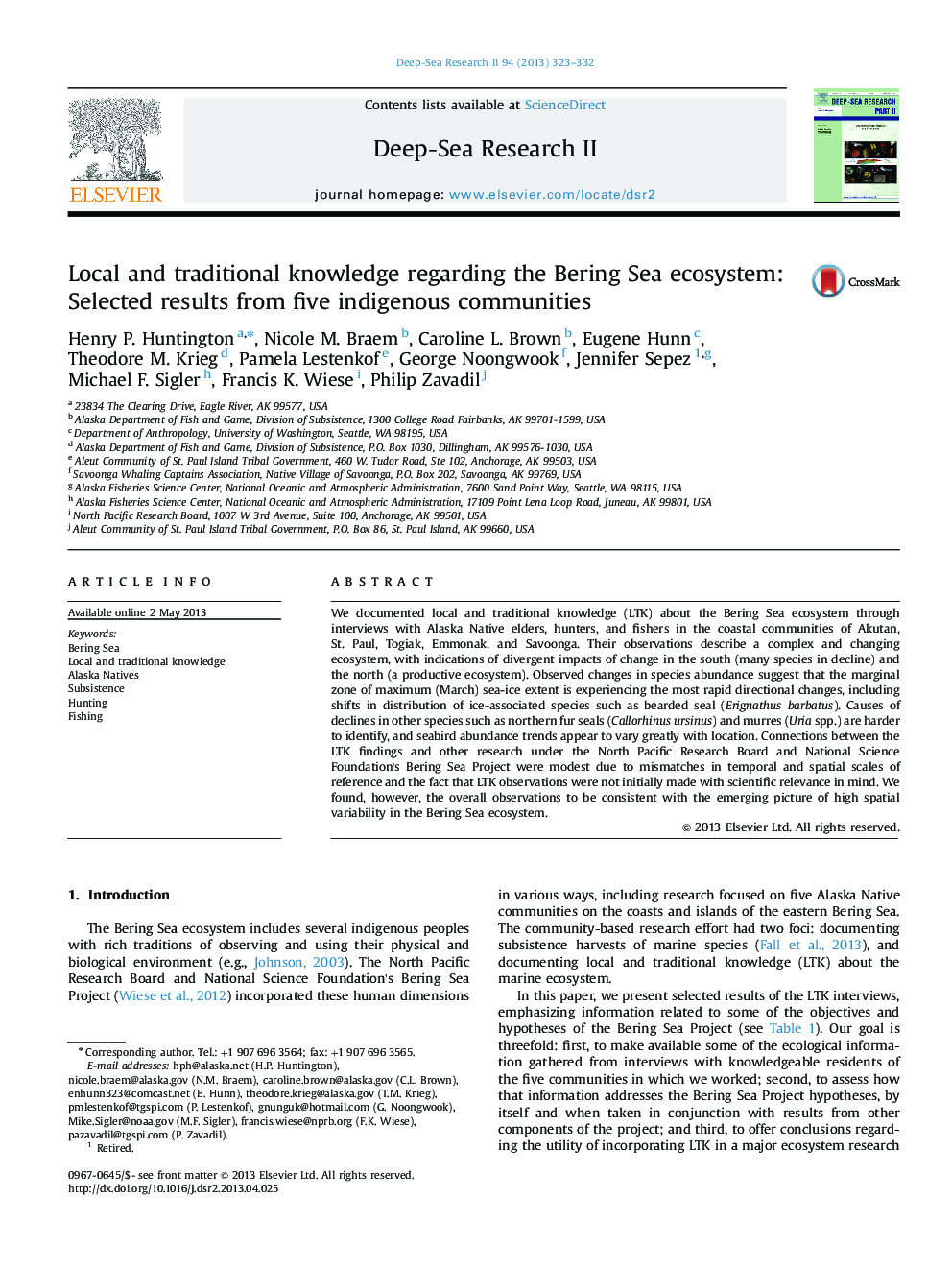| Article ID | Journal | Published Year | Pages | File Type |
|---|---|---|---|---|
| 4536481 | Deep Sea Research Part II: Topical Studies in Oceanography | 2013 | 10 Pages |
We documented local and traditional knowledge (LTK) about the Bering Sea ecosystem through interviews with Alaska Native elders, hunters, and fishers in the coastal communities of Akutan, St. Paul, Togiak, Emmonak, and Savoonga. Their observations describe a complex and changing ecosystem, with indications of divergent impacts of change in the south (many species in decline) and the north (a productive ecosystem). Observed changes in species abundance suggest that the marginal zone of maximum (March) sea-ice extent is experiencing the most rapid directional changes, including shifts in distribution of ice-associated species such as bearded seal (Erignathus barbatus). Causes of declines in other species such as northern fur seals (Callorhinus ursinus) and murres (Uria spp.) are harder to identify, and seabird abundance trends appear to vary greatly with location. Connections between the LTK findings and other research under the North Pacific Research Board and National Science Foundation's Bering Sea Project were modest due to mismatches in temporal and spatial scales of reference and the fact that LTK observations were not initially made with scientific relevance in mind. We found, however, the overall observations to be consistent with the emerging picture of high spatial variability in the Bering Sea ecosystem.
